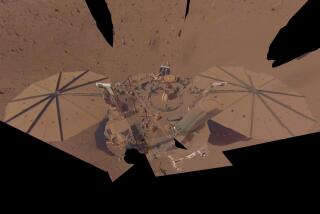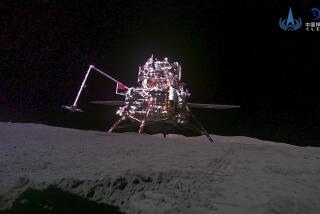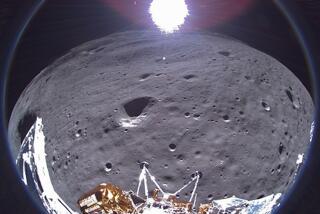Experiment Fails to Find Water on Moon
An attempt to find water on the moon by crashing a used spacecraft into the lunar surface has come up dry, researchers say, confirming the conclusion reached at the time of the experiment.
In a report prepared for presentation today at a meeting of astronomers in Padua, Italy, a researcher from the University of Texas said no water was detected when the Lunar Prospector spacecraft smashed into a moon crater.
The Lunar Prospector, which had completed its mission of mapping the moon from lunar orbit, was sent smashing into a crater near the moon’s south pole July 31. Instruments on the spacecraft had earlier detected the presence of hydrogen, suggesting that the crater could contain ice. Scientists hoped the violence of the crash would splash up a plume of water-bearing dust.
More than a dozen Earth- and space-based telescopes observed the crash site. Researchers hoped that ultraviolet radiation, shining through the dust plume from the crash, would bear the spectral signature of water. No evidence of water was found, said David Goldstein, the University of Texas researcher who led the experiment.
“As expected, we didn’t make a big splash, or we all would have seen a water signal quickly,” Goldstein said in a statement.
Possible reasons for finding no evidence of water, he said in the statement, include:
* The spacecraft missed the target, hitting only dry soil and rock;
* No water exists in the crater, and the hydrogen detected earlier by Lunar Prospector was pure hydrogen and not a component of water.
* The plume created by the crash may not have risen into telescope view above the lip of the crater; or
* The more than a dozen professional telescopes used in the experiment were not aimed properly.
Finding water on the moon, experts say, could make it easier to establish a colony there or to build a fueling station for spacecraft. Water could be chemically split into oxygen and hydrogen, which can be used as a rocket fuel.






